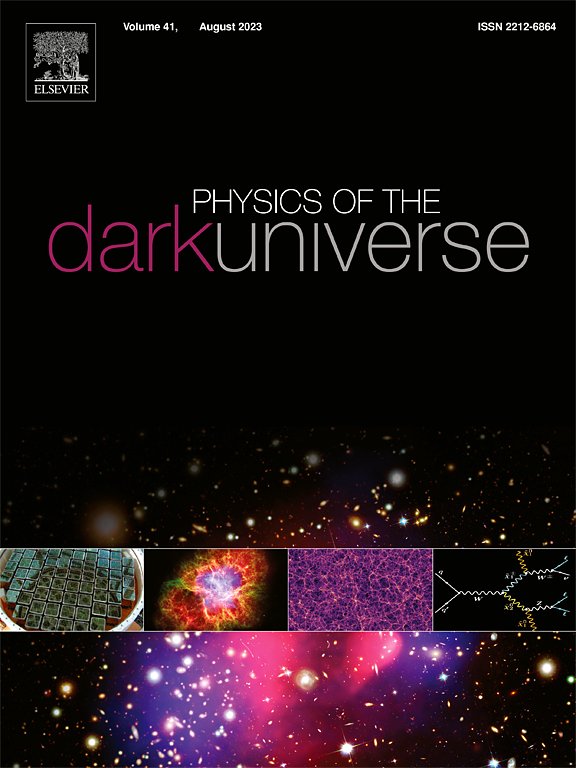Impact of spatial curvature on forecast constraints from standard and differential redshift drift measurements
IF 6.4
2区 物理与天体物理
Q1 ASTRONOMY & ASTROPHYSICS
引用次数: 0
Abstract
The redshift drift of objects following the cosmological expansion is a unique model-independent probe of background cosmology, detectable by astrophysical facilities presently under construction. Previous forecasts for such measurements assume flat universes. We explore the impact of relaxing this assumption on the constraining power of the redshift drift, focusing on the two most promising routes for its measurement: the SKA at low redshifts, and the Golden Sample for the ELT’s ANDES spectrograph at higher redshifts. We also discuss the cosmological sensitivity of possible differential redshift drift measurements, both on their own and, for the specific case of the Golden Sample, in combination with the standard method. Overall, we find that the sensitivity of the redshift drift to curvature is comparable to that of matter (especially at low redshifts) and higher than the sensitivity to the dark energy equation of state. We also show that the sensitivity of redshift drift measurements to these cosmological parameters is asymmetric with respect to the curvature parameter, being different for open and closed universes with the same absolute value of the curvature parameter .
空间曲率对来自标准和微分红移漂移测量的预报约束的影响
宇宙膨胀后物体的红移漂移是一种独特的与模型无关的背景宇宙学探测,目前正在建设的天体物理设施可以探测到。先前对这类测量的预测假设宇宙是平坦的。我们探索放宽这一假设对红移漂移约束能力的影响,重点关注其测量的两种最有希望的途径:低红移的SKA和高红移的ELT的安第斯光谱仪的黄金样本。我们还讨论了可能的微分红移漂移测量的宇宙学灵敏度,无论是单独的,还是与标准方法结合的黄金样品的具体情况。总的来说,我们发现红移漂移对曲率的灵敏度与物质的灵敏度相当(特别是在低红移时),并且高于对暗能量状态方程的灵敏度。我们还表明,红移漂移测量对这些宇宙学参数的灵敏度与曲率参数是不对称的,对于曲率参数绝对值相同的开放和封闭宇宙是不同的Ωk。
本文章由计算机程序翻译,如有差异,请以英文原文为准。
求助全文
约1分钟内获得全文
求助全文
来源期刊

Physics of the Dark Universe
ASTRONOMY & ASTROPHYSICS-
CiteScore
9.60
自引率
7.30%
发文量
118
审稿时长
61 days
期刊介绍:
Physics of the Dark Universe is an innovative online-only journal that offers rapid publication of peer-reviewed, original research articles considered of high scientific impact.
The journal is focused on the understanding of Dark Matter, Dark Energy, Early Universe, gravitational waves and neutrinos, covering all theoretical, experimental and phenomenological aspects.
 求助内容:
求助内容: 应助结果提醒方式:
应助结果提醒方式:


